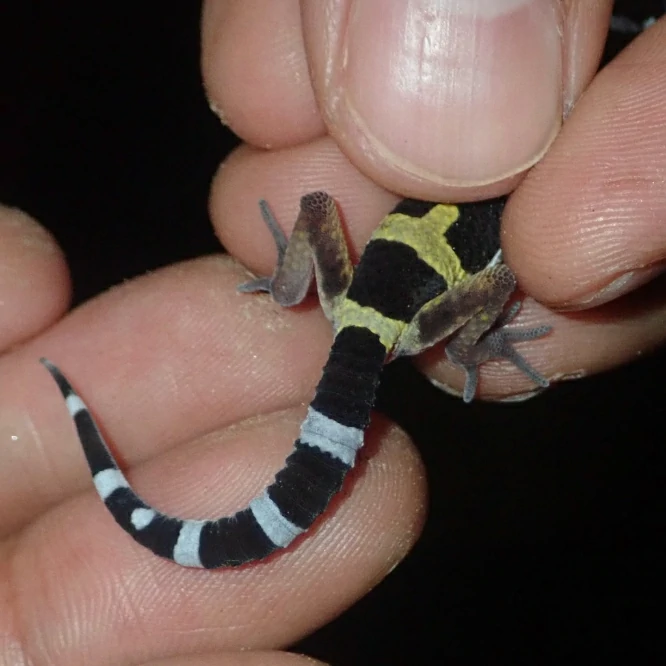If you’ve ever watched a gecko run across a wall or stop under a light, you’ve probably noticed its tail. It’s not just hanging there for decoration, it moves, twitches, and sometimes even falls off. But why do geckos even have tails? What’s the point of it?
Geckos have tails because they use them for balance, defense, storing fat, and even talking to other geckos. Their tails help them move safely, get away from predators, survive when food is scarce, and send signals to other geckos. It’s like a tool, a safety net, and a backup energy supply all in one.
Their tails might look simple, but they’re actually really clever. A gecko’s tail helps it climb, hide, and stay alive in the wild.
The Tail Helps Geckos Keep Their Balance
When a gecko runs up a wall or across the ceiling, its tail works like a counterweight. It keeps the gecko from flipping over or losing grip when it makes sharp turns.
In many species (like the house gecko or leopard gecko) the tail swings a little from side to side as they walk.
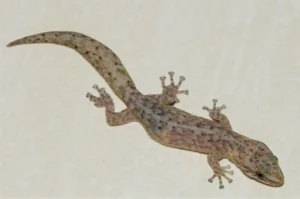
That movement keeps them balanced, especially when they jump from one surface to another.
Think about holding a long stick while walking on a narrow beam. That’s what the tail does, it keeps the gecko steady. Without it, every jump or climb would be risky.
But tails aren’t just for balance. Geckos need them for something even more important, staying alive.
How Geckos Use Their Tails to Escape Danger
When a predator grabs a gecko, something amazing happens: the gecko drops its tail on purpose. This is called autotomy, and it’s one of nature’s smartest escape tricks.
The tail doesn’t just fall quietly. It keeps twitching and wiggling, distracting the predator long enough for the gecko to run away.
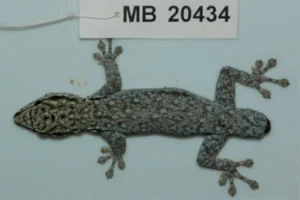
movement looks alive; tricking birds, snakes, or even cats into going after the tail instead of the gecko.
The tail has weak spots built in, called fracture planes, that break easily with very little bleeding. Basically, geckos are built to drop their tails cleanly and safely.
But losing a tail isn’t easy. Growing a new one takes a lot of energy, and the new tail never looks exactly like the old one.
What Happens After a Gecko’s Tail Falls Off?
After the tail is gone, geckos start healing almost right away. Within a few days, the wound closes, and a soft new tail starts to grow.
The new tail is different, shorter, smoother, and mostly made of cartilage instead of bone.
You can usually spot a gecko with a new tail because it looks a bit swollen and duller than the rest of its body.
While this replacement tail helps the gecko get by, it costs a lot of energy.
Geckos that just lost their tails may eat more or move less to save strength. Some even act more careful until the tail is fully ready.
Even with a new tail, the old one was always better at storing something very important: fat.
The Tail Stores Fat as a Backup Energy Supply
Many gecko species, especially those living in dry or seasonal environments, store fat in their tails. This fat acts like a backup energy supply when food is hard to find.
For example, a leopard gecko’s tail can get thick and plump after a few weeks of eating well.
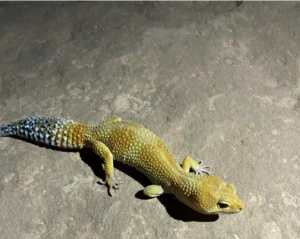
During cold seasons, dry periods, or sickness, it uses that stored fat to stay alive.
You can even tell how healthy a gecko is just by looking at its tail. A full, rounded tail means it’s well-fed and strong.
A thin tail means it’s been struggling for food or recovering from stress.
Basically, the tail is like a little built-in pantry, it keeps the gecko going when life gets tough.
Do All Geckos Store Fat in Their Tails?
Not all geckos use their tails the same way. Tropical and tree-dwelling geckos, like the crested gecko, don’t rely on tail fat as much because food and water are around all year.
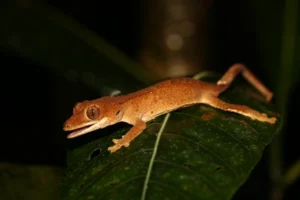
Desert or ground-dwelling species, like leopard geckos or fat-tailed geckos, rely heavily on their tails for fat storage.
environments can swing from lots of food to almost none, so the tail helps them survive long dry periods.
It just goes to show how adaptable geckos are. The same body part can have very different uses depending on where the gecko lives.
The Tail Helps Geckos Communicate
Tails aren’t just for moving and storing fat. They also help geckos “talk” to each other.
If you watch geckos closely, you’ll see their tails twitch or wave in different ways.
These movements send messages to other geckos, sometimes warnings, sometimes invitations.
For example:
-
A slow wave might warn another gecko to stay away.
-
A quick shake can show fear or stress.
-
A raised tail might mean the gecko is on alert, ready to drop it if needed.
During mating, male geckos often flick their tails fast to attract females or show dominance to other males. It’s like secret body language written in movement.
Why Geckos Can Move Their Tails Even After They Fall Off
Here’s something still amazing, even after it’s detached, a gecko’s tail can keep moving for several minutes.
That happens because the tail has its own nerve circuits that stay active for a short time after separation.
These nerves make the muscles contract automatically, so the tail wiggles and jumps.
That’s what helps distract predators. It’s like a survival tool that keeps fighting for the gecko even when it’s gone.
It also shows how connected the tail is to the gecko’s nervous system.
It’s not just a limb; it’s part of how the gecko senses and reacts to danger.
How Losing a Tail Affects a Gecko’s Life
A gecko without its tail isn’t helpless, but life does change for a while.
It might move slower or have trouble balancing, especially when climbing. It also loses some of its stored fat, meaning less backup energy.
Some geckos may become easier prey because their main defense trick is gone.
Most geckos bounce back. Within a few weeks, the new tail starts forming, and their energy levels return to normal.
Nature gives them resilience, the ability to recover from even a big loss.
What About Pet Geckos? Should You Worry if the Tail Drops?
If you keep a gecko as a pet and it drops its tail, don’t panic. It’s a natural defense reaction, usually caused by stress, rough handling, or a sudden scare.
The wound will heal on its own if the gecko is kept in a clean, quiet space. Give it food, water, and a safe hiding spot.
Avoid touching or stressing it until the tail starts to grow back.
Still, it’s better to prevent tail loss. Always handle geckos gently, and never grab them by the tail. Remember, that tail is their emergency escape tool, not a handle.
Do Geckos Use Their Tails for Anything Else?
Yes, in some species, the tail also helps with temperature control.
By moving blood in and out of the tail, geckos can release extra heat or hold onto warmth. It’s not as advanced as a mammal, but it helps them handle sudden changes in temperature.
In a way, the tail is like a natural thermostat, adjusting comfort as the gecko moves between sunny rocks, shaded walls, or cool night air.
Conclusion
A gecko’s tail is way more than decoration, it’s a very important part of how it lives, moves, and survives.
It balances their jumps, stores energy, talks to other geckos, and even saves their life in emergencies.
It’s basically a story of evolution, written in movement and muscle.
Next time you see a gecko pause with its tail twitching behind it, remember: that small motion carries millions of years of survival skill.
Hi, my name is Ezra Mushala, i have been interested animals all my life. I am the main author and editor here at snakeinformer.com.

